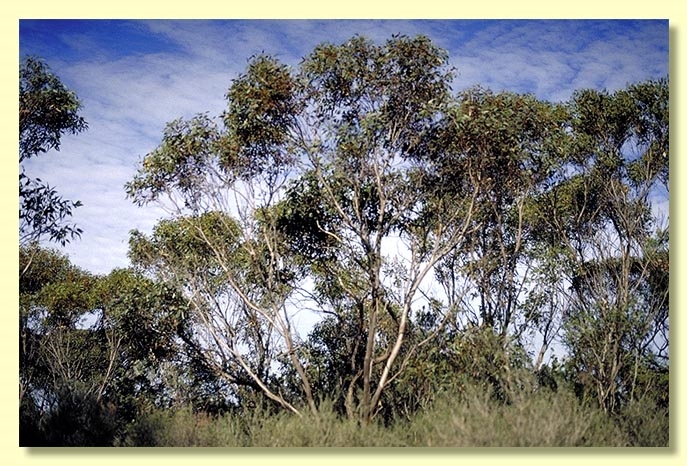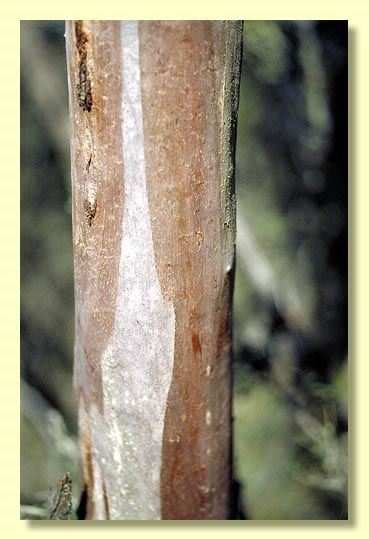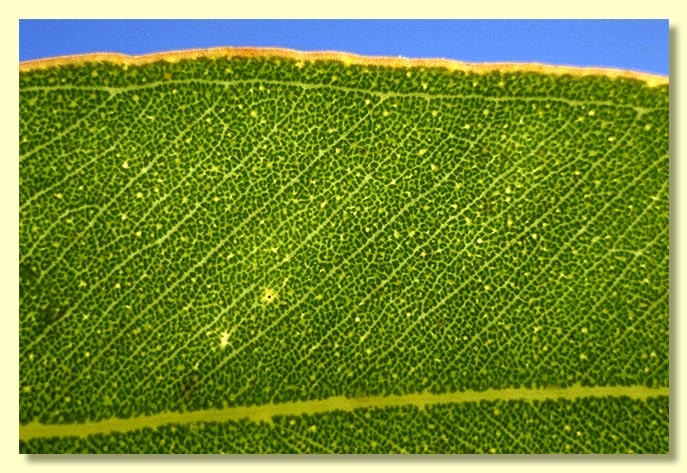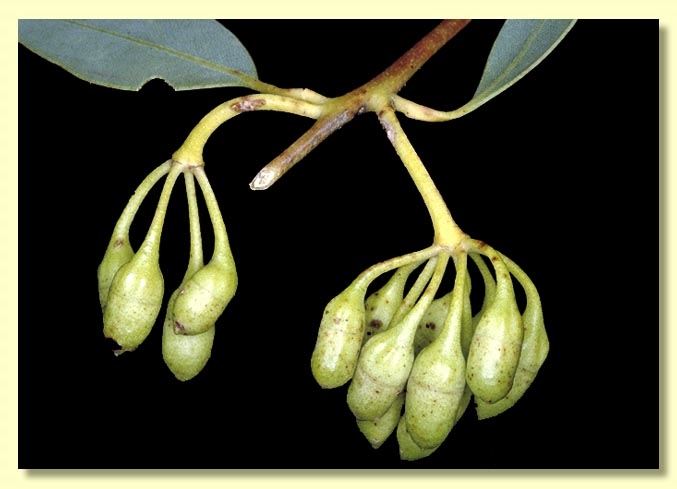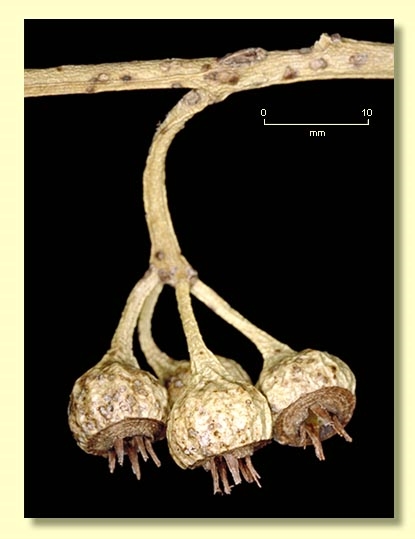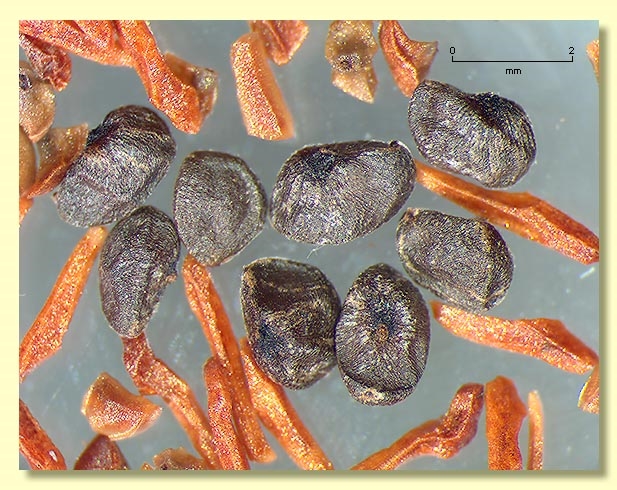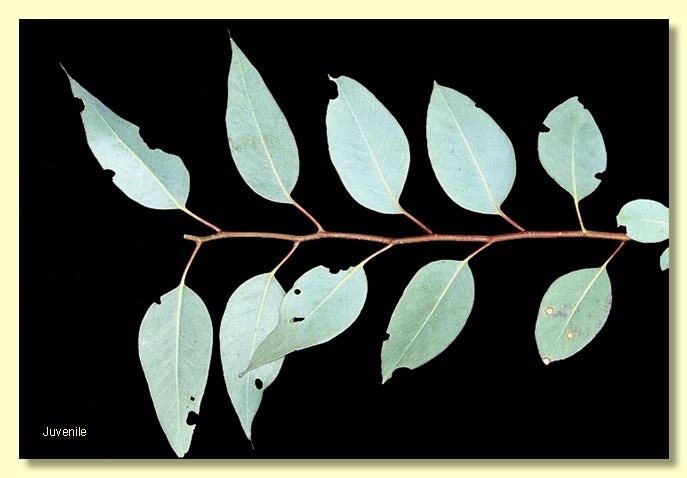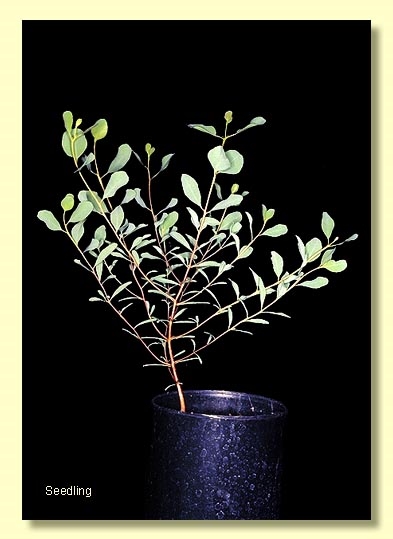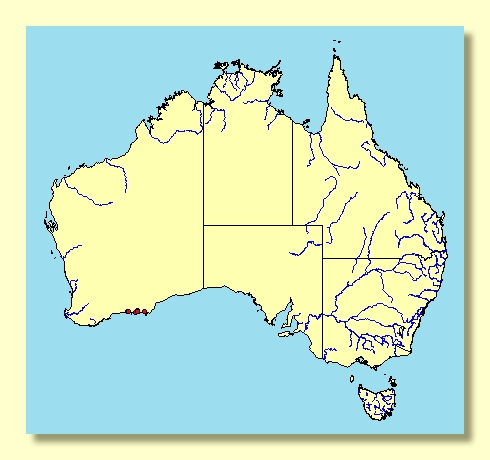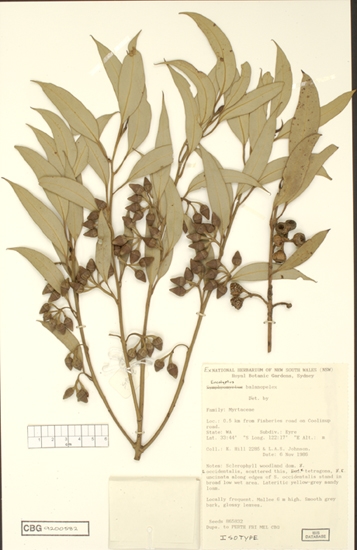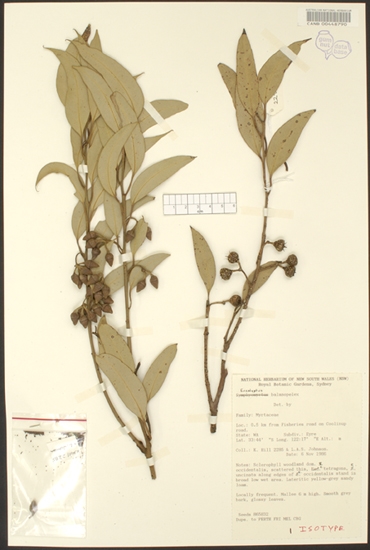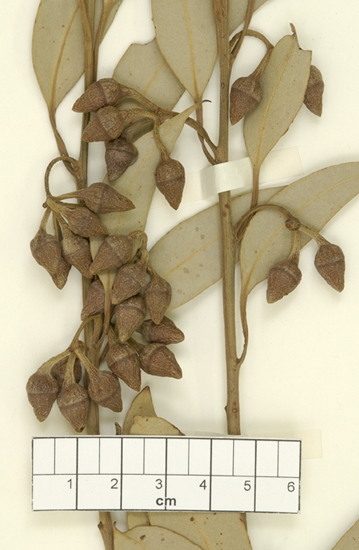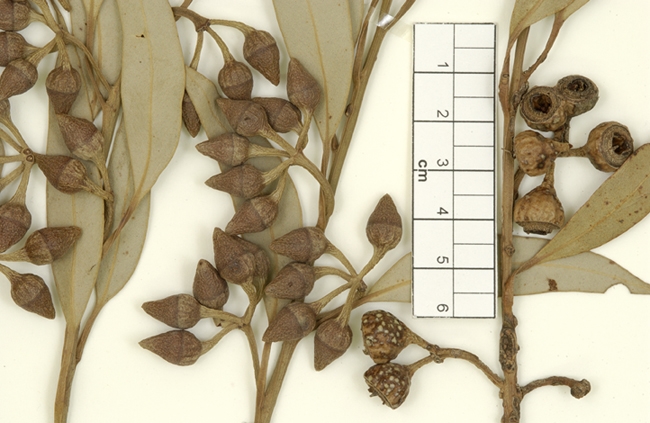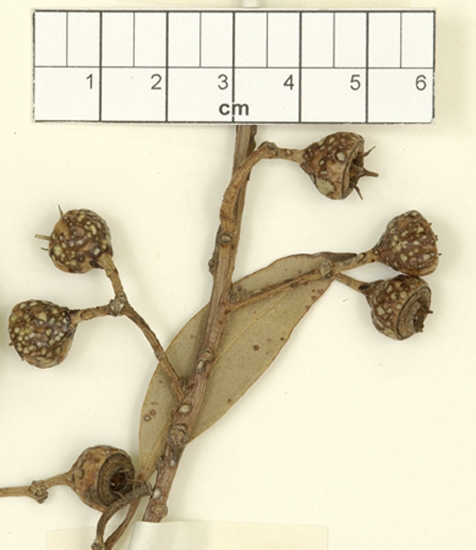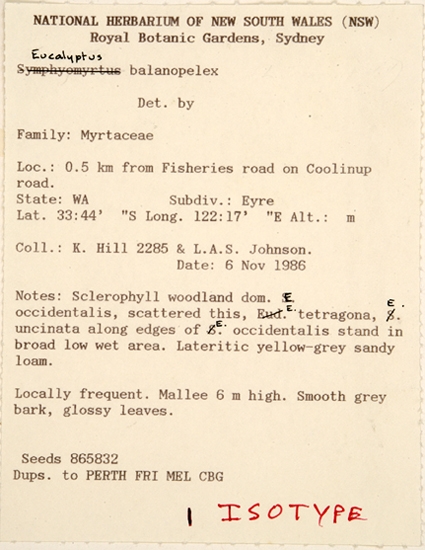Eucalyptus | Symphyomyrtus | Bisectae | Destitutae | Falcatae | Rugatae
Euclid - Online edition
Eucalyptus x balanopelex
The x in the above binomial indicates hybrid status and is used here in accordance with Australian Plant Census https://biodiversity.org.au/nsl/services/apc accessed 19 April 2017.
Nicolle & French, Nuytsia 22: 432-433 (2012), argue that this taxon is a hybrid between the widespread coastal mallee E. kessellii subsp. eugnosta and the more restricted E. semiglobosa, both of which occur in the Esperance area.
Bark smooth throughout, pale grey over reddish brown to pale brown.
Juvenile stems rounded in cross-section; juvenile leaves always petiolate, opposite at only the lowest couple of nodes then alternate, ovate, 6–11 cm long, 3.5–5 cm wide, base tapering, margin entire, apex pointed, dull, green.
Branchlets lacking oil glands in the pith.
Adult leaves alternate, petioles 1–2.5 cm long; blade lanceolate to broadly so, 6.5–12 cm long, 1.3–3 cm wide, base tapering to petiole, margin entire, apex pointed, concolorous, usually glossy, green, side-veins at an acute or wider angle to midrib, with dense to very dense reticulation, intramarginal vein remote from margin, oil glands few, irregular, intersectional.
Inflorescence axillary unbranched, pendulous, peduncles 0.8–2.5 cm long, buds 7 or 9 per umbel, pedicellate (pedicels 0.3–0.9 cm long). Mature buds ovoid with shallow longitudinal ribs, 1.2–1.9 cm long, 0.5–0.9 cm wide, scar present, operculum usually conical, stamens inflexed, anthers cuboid, versatile, sub-basifixed, dehiscing by longitudinal slits, style long and straight, stigma blunt to oblique, locules 4(5), the placentae each with 4 vertical rows of ovules. Flowers creamy white.
Fruit on down-turned peduncles, pedicellate (pedicels 0.2–1 cm long), hemispherical to truncate-globose, 0.8–1 cm long, 0.9–1.2 cm wide including any ribs, rim usually thick, inner edge of staminophore sometimes raised in dehisced fruit, disc descending, valves 4(5), valves strongly exserted but tips fragile style remnants.
Seeds dark grey-brown, 1–2.5 mm long, ovoid to flattened-ovoid, dorsal surface very shallowly reticulate, hilum ventral.
Cultivated seedlings (measured at ca node 10): cotyledons Y-shaped (bisected); stems rounded to square in cross-section; leaves at first linear and subsessile, opposite to sub-opposite for at least 18 nodes or becoming alternate by ca node 14 (but may revert to opposite for a few nodes), becoming bluntly narrow-lanceolate until ca node 8–11 then broadly elliptical to ovate with obvious petioles, 2–7.5 cm long, 0.5–4 cm wide, base tapering, apex ultimately acute, green to slightly grey-green, dull.
Flowering time unknown.
A mallee endemic to Western Australia, restricted to low-lying sandplain heath east of Esperance. It has smooth bark and glossy green leaves and pendulous umbels.
Eucalyptus x balanopelex was not included in the classification of Eucalyptus by Brooker (2000). In the original description in 1992 Johnson & Hill stated that the plants had affinity with E. semiglobosa, a species originally described by Brooker as a subpecies, E. goniantha subsp. semiglobosa, in 1976. In 2012 Nicolle & French published a new account of Eucalyptus series Falcatae involving major changes to some species names and boundaries, including recognition of the hybrid status of these plants. These authors suggested the plants east of Esperance at Coolinup Road were a hybrid swarm with E. kessellii subsp eugnosta and E. semiglobosa as likely parents based on morphology and distribution of the purported parentral taxa i.e.between two taxa in series Falcatae subseries Rugatae of Brooker's classification. In accepting Johnson & Hill's taxon as a hybrid worth including in EUCLID the binomial must be E. x balanopelex.
Eucalyptus x balanopelex differs from E. semiglobosa by having longer, more conical, opercula (± hemispherical in E. semiglobosa). Also E. semiglobosa is found in a different habitat, viz. the base of large granite hills. The photo of buds in this fact sheet comes from the type locality for E. x balanopelex and the buds are less conical than dried buds on the type specimen. The extent of variation in this population at Coolinup road further reinforces its likely hybrid origin. Nicolle & French (ibid. page 432) include an interesting discussion of the plants at this site.

